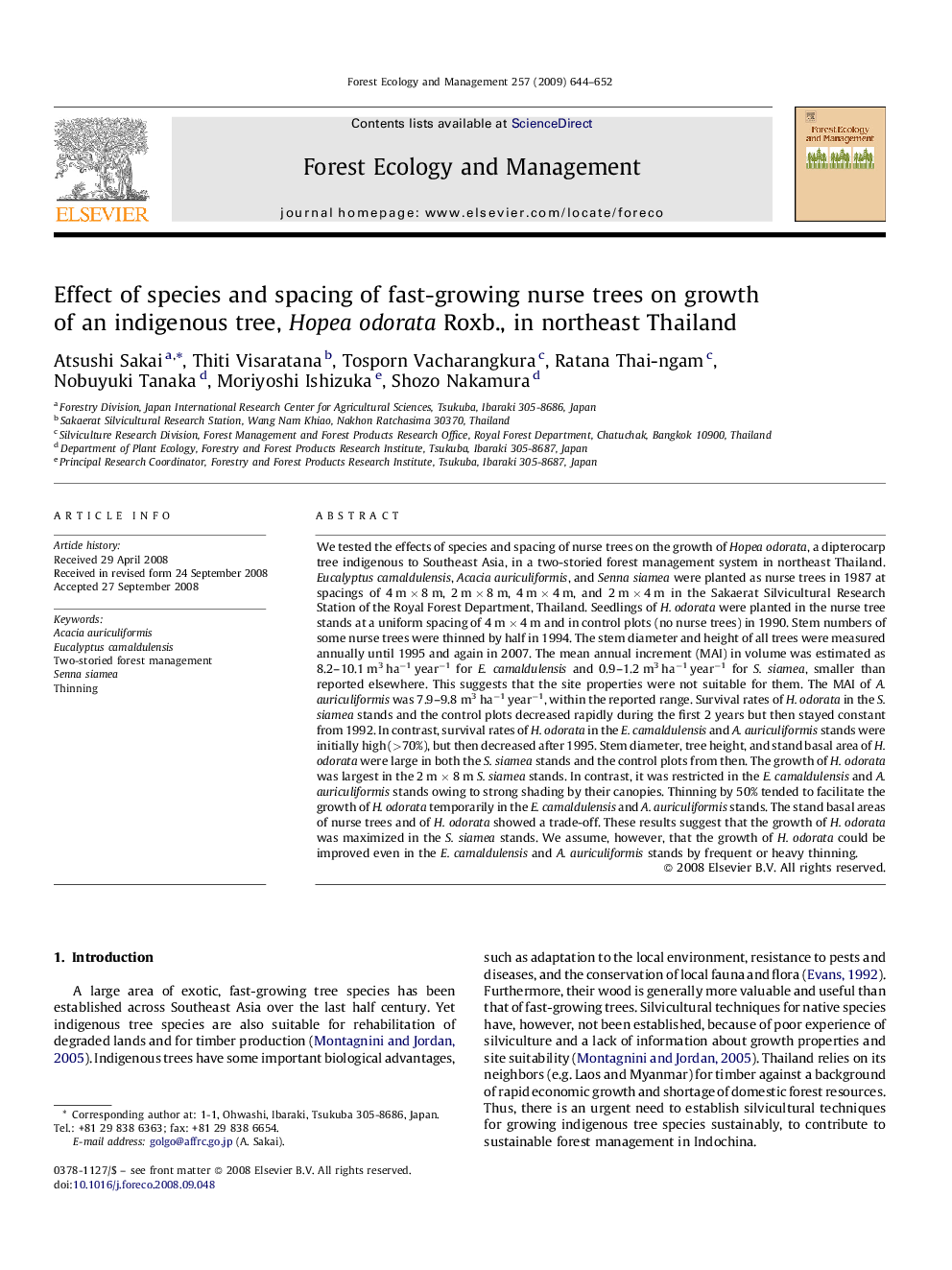| کد مقاله | کد نشریه | سال انتشار | مقاله انگلیسی | نسخه تمام متن |
|---|---|---|---|---|
| 89288 | 159337 | 2009 | 9 صفحه PDF | دانلود رایگان |

We tested the effects of species and spacing of nurse trees on the growth of Hopea odorata, a dipterocarp tree indigenous to Southeast Asia, in a two-storied forest management system in northeast Thailand. Eucalyptus camaldulensis, Acacia auriculiformis, and Senna siamea were planted as nurse trees in 1987 at spacings of 4 m × 8 m, 2 m × 8 m, 4 m × 4 m, and 2 m × 4 m in the Sakaerat Silvicultural Research Station of the Royal Forest Department, Thailand. Seedlings of H. odorata were planted in the nurse tree stands at a uniform spacing of 4 m × 4 m and in control plots (no nurse trees) in 1990. Stem numbers of some nurse trees were thinned by half in 1994. The stem diameter and height of all trees were measured annually until 1995 and again in 2007. The mean annual increment (MAI) in volume was estimated as 8.2–10.1 m3 ha−1 year−1 for E. camaldulensis and 0.9–1.2 m3 ha−1 year−1 for S. siamea, smaller than reported elsewhere. This suggests that the site properties were not suitable for them. The MAI of A. auriculiformis was 7.9–9.8 m3 ha−1 year−1, within the reported range. Survival rates of H. odorata in the S. siamea stands and the control plots decreased rapidly during the first 2 years but then stayed constant from 1992. In contrast, survival rates of H. odorata in the E. camaldulensis and A. auriculiformis stands were initially high (>70%), but then decreased after 1995. Stem diameter, tree height, and stand basal area of H. odorata were large in both the S. siamea stands and the control plots from then. The growth of H. odorata was largest in the 2 m × 8 m S. siamea stands. In contrast, it was restricted in the E. camaldulensis and A. auriculiformis stands owing to strong shading by their canopies. Thinning by 50% tended to facilitate the growth of H. odorata temporarily in the E. camaldulensis and A. auriculiformis stands. The stand basal areas of nurse trees and of H. odorata showed a trade-off. These results suggest that the growth of H. odorata was maximized in the S. siamea stands. We assume, however, that the growth of H. odorata could be improved even in the E. camaldulensis and A. auriculiformis stands by frequent or heavy thinning.
Journal: Forest Ecology and Management - Volume 257, Issue 2, 31 January 2009, Pages 644–652